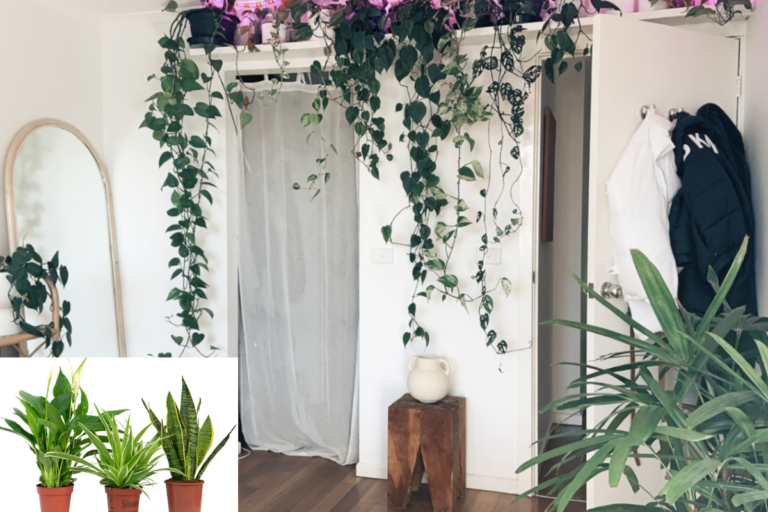House plants are more than decorative elements in a house – they bring life and nature into our homes. Whether it’s an intimate apartment or a huge home, adding house plants to your living space can enhance it, improve air quality, and even lift your spirits. This guide will take you through different types of house plants, their advantages and how to take care of them. Dive into indoor gardening and turn your abode into a green oasis.
The Advantages of Having Houseplants
House plants have numerous benefits that make them necessary items for any home.
Improved Air Quality
Many houseplants serve as natural air purifiers. Spider plants, snake plants and peace lilies, between others, can eliminate toxins from the atmosphere, thus improving the healthiness of your home. They absorb carbon dioxide while releasing oxygen, thereby generally improving air conditioning.
Enhancing Aesthetic Appeal
Indoor plants add beauty and elegance to any room. The variety of shapes, sizes and colours makes it possible for these organisms to blend with any interior design style. From fiddle leaf fig’s sleek lines to cascading leaves of pothos, there is something for every taste.
Boosting Mental Health
It has been shown that staying around plants can help lower stress levels and enhance moods. Taking care of indoor plants can act as therapy by offering a sense of achievement while relaxing at the same time.
Choosing Appropriate Indoor Plants
When selecting indoor plants, consider lighting, space availability and maintenance requirements. Here are some popular options:
Snake Plant (Sansevieria trifasciata)
Characterized by its striking upright leaves requiring little attention, this plant does best in dim light settings and needs minimal watering, making it great for beginners.
Pothos (Epipremnum aureum)
It is an all-around plant with heart-shaped leaves that can grown in hanging baskets or trained to mount. It does well in dim light conditions and can go for a while without water.
Peace Lily (Spathiphyllum)
Peace lilies are graceful plants with dark green leaves and white flowers that prefer low to medium light. They should be kept wet but not soaked.
Fiddle Leaf Fig (Ficus lyrata)
The fiddle leaf fig is an eye-catching plant with large, shiny leaves. It thrives on bright indirect sunlight rays combined with constant watering. Although this plant requires a little more attention, it’s worth the effort.
Spider Plant (Chlorophytum comosum)
Characterized by its arching leaves and small white flowers, spider plants thrive in bright indirect sunlight conditions and need a regular water supply. Also, they are excellent for propagation because they produce babies that can be replanted.
Taking Care of Your House Plants
To keep your house plants healthy and happy, you must take good care of them. Here are some general rules:
Lighting
Different plants require different types of light. While a few thrive in bright, indirect light, others can live in low-light situations. Place your plants according to their lighting needs and occasionally rotate them for even growth.
Watering
A common mistake is overwatering. Most potted plants prefer drying out between waterings. Water if the soil is dry, but before that, ensure proper drainage so as not to cause root rot.
Humidity
Many mammals love humidity, especially tropical ones. If your house is dry, you can put a humidifier on or near the plants.
Fertilizing
During the growing season (spring and summer), give your plants balanced, water-soluble fertilizer. Feeding is reduced in fall and winter when plant growth slows down.
Pruning
Doing regular pruning helps maintain plant shape and health. Remove dead or yellowing leaves and cut back overgrown stems for new growth.
Troubleshooting Common Issues
Nonetheless, indoor plants can have problems despite the best care given. These are some of the common issues that may arise:
Yellowing Leaves
Overwatering, underwatering or lack of nutrients can cause yellow leaves. Check watering practices and consider repotting if root-bound.
Brown Leaf Tips
Low humidity or too much salt from fertilizer usually results in brown tips. Eliminating extra salts increases humidity levels, while rinsing the soil with water helps prevent this problem.
Pests
Spider mites, aphids, and mealybugs are commonly found pests. Infestations should be treated using insecticidal soap or neem oil, while infected plants are kept from other plants to contain them.
Conclusion
Houseplants make great home additions because they serve both decorative and health purposes. You will have a lush green environment all year round by choosing appropriate species and paying adequate attention to them. Whether you’re an experienced gardener or just beginning your journey in gardening, there’s a perfect indoor plant for everyone.
- Growing Bonsai: Tips for Miniature Tree Enthusiasts
- Buying Bonsai: Tips for Selecting Your Perfect Tree
- Bonsai Potting: Essential Tips for Tree Care Success
- Bonsai Maintenance: Essential Care for Tiny Trees
- Mastering the Art of Shaping Bonsai: A Beginner’s Guide
Source: University of Florida


